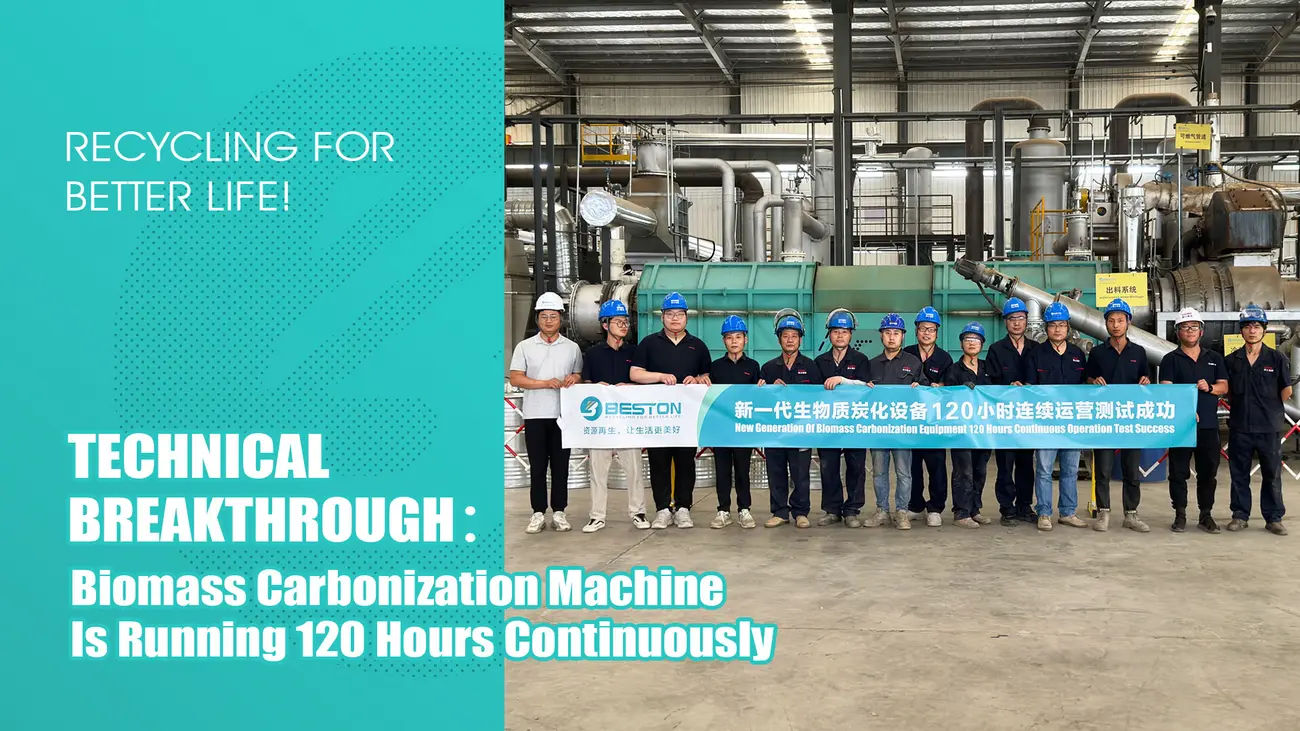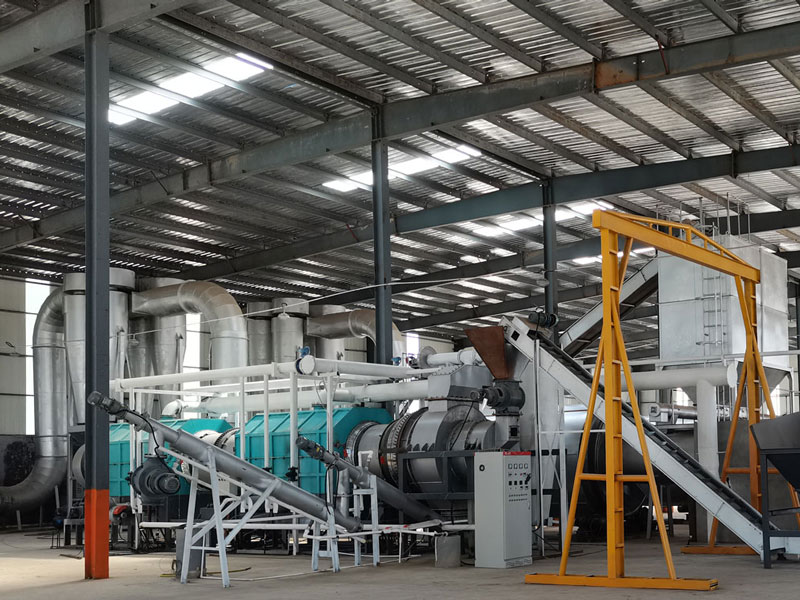Recently, Beston Group, a leader in waste recycling solutions, has made a significant breakthrough with its new generation of biomass continuous pyrolysis technology.

What is Biomass Pyrolysis?
Biomass pyrolysis process is a process that converts organic materials (biomass) into bio-oil, syngas, and biochar through thermal decomposition in the absence of oxygen. This technology is essential for transforming waste materials into valuable products, contributing to waste reduction and renewable energy production.
Beston Group’s Breakthrough
The recent breakthrough by Beston Group is centered around the enhancement of their continuous pyrolysis technology. This advanced system is designed to operate continuously for five days without the need for shutdowns, significantly improving efficiency and productivity. Here’s a closer look at what makes this innovation stand out:
1. Continuous Operation
Traditional pyrolysis systems often require intermittent shutdowns for maintenance and cleaning, which hampers efficiency and increases operational costs. Beston’s new system, however, has been engineered to run non-stop for five days, allowing for uninterrupted processing of biomass. This continuous operation capability ensures higher throughput and maximizes the utilization of the charcoal making equipment.
2. Enhanced Automation
The new generation of Beston’s pyrolysis technology incorporates advanced automation features. Automated feeding, temperature control, and discharge systems reduce the need for manual intervention, enhancing safety and operational efficiency. The system’s automation also ensures consistent product quality and minimizes the risk of human error.
3. Energy Efficiency
Energy efficiency is a critical aspect of pyrolysis technology. Beston’s continuous pyrolysis system is designed to optimize energy consumption. The advanced heat exchange mechanisms and energy recovery systems reduce the overall energy input required, making the process more sustainable and cost-effective.
4. Environmental Impact
Beston Group’s technology significantly reduces the environmental footprint of waste processing. By converting biomass into valuable byproducts, it minimizes the amount of waste sent to landfills and reduces greenhouse gas emissions. The production of bio-oil and syngas can also serve as renewable energy sources, further contributing to environmental sustainability.
5. Scalability
The scalability of Beston’s continuous pyrolysis technology is another noteworthy advantage. Whether it’s a small-scale operation or a large industrial facility, the system can be tailored to meet specific needs. This flexibility makes it an attractive solution for various industries looking to implement sustainable waste management practices.
Applications and Implications
The ability to achieve continuous operation of biochar making machine for five days opens up a myriad of possibilities for biomass recycling. Industries such as agriculture, forestry, and municipal waste management can significantly benefit from this advancement. By converting agricultural residues, wood chips, and municipal solid waste into valuable products, these industries can enhance their sustainability efforts and create new revenue streams.
Moreover, the biochar produced through pyrolysis can be used to improve soil health, sequester carbon, and enhance agricultural productivity. Bio-oil and syngas can be used as alternative energy sources, reducing reliance on fossil fuels and contributing to energy security.

Conclusion
Beston Group’s new generation of biomass continuous pyrolysis technology represents a significant leap forward in waste management and renewable energy production. With the capability to operate continuously for five days, this breakthrough offers enhanced efficiency, automation, energy savings, and environmental benefits. As industries and communities seek sustainable solutions to waste management, Beston’s innovative technology stands out as a promising and impactful option.
This advancement not only underscores Beston Group’s commitment to innovation and sustainability but also sets a new benchmark in the field of biomass pyrolysis. The future of waste management and renewable energy looks brighter with such groundbreaking technologies leading the way.